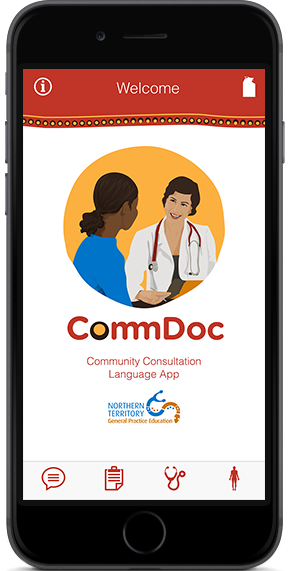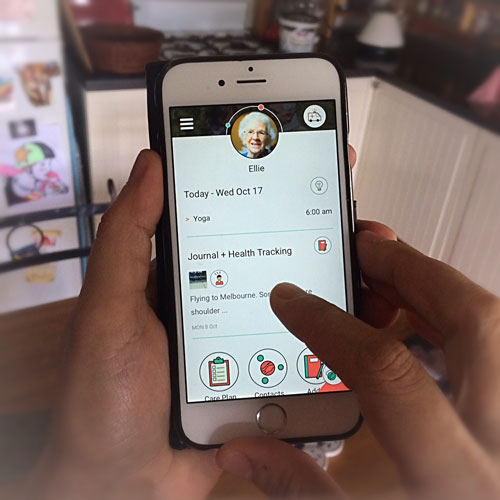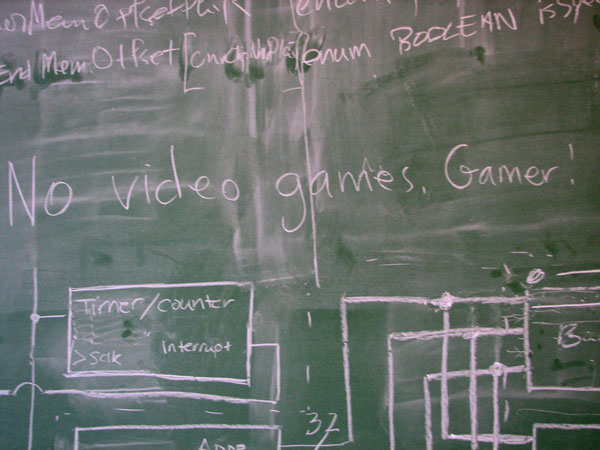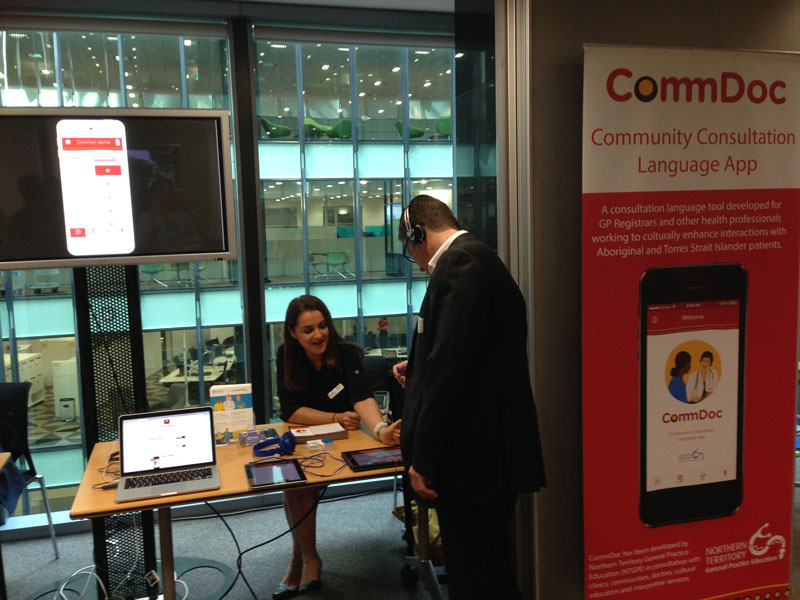Blog
Ten mental health learning resources
Tuesday, 30th August 2022
Changing our response to and preventing mental illness begins with education. Here are 10 outstanding resources to begin demystifying mental illness and creating mentally healthy communities.
Ten resources to end ageism
Monday, 13th December 2021
Here are ten excellent resources for getting informed, inspired and all-age inclusive.
Five things to avoid when writing online assessment questions
Wednesday 6th October, 2021
Well-designed assessment enables your learners the opportunity to get feedback on what they know, how they can apply it in real life and what they need to focus on to meet their learning goals. It creates online learning that is supportive, engaging and effective.
Self-determination theory in elearning
Friday 14th May, 2021
What motivates learners to act? We look at how self-determination theory can help you create elearning environments that promote motivation and performance.
The 4Cs of learning applied to adult learning and elearning
Thursday 28th January, 2021
Online learning will serve the needs of today’s learners through the integration of critical thinking, communication, creativity and collaboration – the 4Cs of learning.
How to write your elearning content
Friday 6th November, 2020
Asking a few simple questions before you begin writing your course will keep you on track to engaging and effective online learning.
How to make your elearning project cost-effective
Thursday 24th September, 2020
Designing and developing online education and training modules can be an expensive exercise if not planned and prepared thoroughly. Constant changes to content, updates, maintenance and delays all cost money.
But there are steps you can take to minimise the risk of an elearning budget blowout.
Learning Experience (LX) Design: Shifting focus from content to learner
Thursday 16th July, 2020
At the centre of LX design is the learner. It takes the focus of online learning from content to learner.
Combining the best practices of instructional design and user experience design, Learning Experience Design creates a learning environment that delivers content that is not only accessible, effective and engaging but truly focused on the learner’s needs.
New QENDO endometriosis app launched
Wednesday 1st July, 2020
The QENDO App enables endometriosis sufferers (and those that care for them) to actively track, journal and share their journey, using a range of health indicators and variables.
What works in elearning (5/5): Learning methods that work: Feedback
Tuesday 28th April, 2020
Feedback in elearning helps learners identify where they are on the path to their learning objectives.
What works in elearning (4/5): Learning methods that work: Real-world contexts (Authentic learning)
Thursday 23rd April, 2020
Authentic learning - that uses real-world contexts, realistic decision-making and authentic tasks and activities - is a one of the most powerful learning methods that can be used in elearning.
What works in elearning (3/5): Learning methods that work: Spaced repetition
Tuesday 21st April, 2020
For learning that requires long-term memory retrieval, there are greater effects with spaced repetition than a single presentation of information or even non-spaced repetition.
What works in elearning (2/5): Learning methods that work: Retrieval Practice
Thursday 16th April, 2020
Research suggests that getting information out of the learner’s head is actually one of the most effective learning methods you can use in your elearning.
What works in elearning (1/5): Is elearning more effective than classroom-based learning?
Tuesday 14th April, 2020
What the research has found about the effectiveness of different learning delivery methods: classroom, elearning and blended learning.
Republish your existing Flash based courses to HTML5 before December 31 2020
Wednesday 26th February, 2020
A regular experience for anyone who’s watched a video or animation in a web browser has been the annoying dialogue box popping up telling you your Flash Player needs updating (or isn’t installed).
As users we may have cursed this not-so-flash inconvenience, but Flash has been working behind the scenes for over 20 years, helping your browser play videos and animations.
Technology has caught up with Flash. Adobe is discontinuing support and updates for the popular software on 31st December 2020.
Twelve things to consider before starting a new elearning project
Tuesday 11th February, 2020
Are you ready to convert your training into an online course? Before you talk with an elearning specialist, its good to be clear about your project's aim and scope. Here are 12 questions that will help you see what's involved.
How elearning courses are developed
Monday 10th February, 2020
A 20 to 30-minute elearning course usually takes about 12 weeks from the contract signing to course delivery and consists of four phases: Discovery, design, development and delivery.
Robots, rooms, reductions: The brave new world of telepresence for online learning
Tuesday 21st January, 2020
Remote workers may feel disconnected to their colleagues located thousands of kilometres away. Telepresence provides a solution to this problem.
6 tips for designing online course evaluations
Wednesday 15th January, 2020
Your online course has had considerable time, energy and money invested in it so it’s natural (and savvy) to want to know whether it actually does what it’s designed to do.
In the pursuit of user data, there can be a tendency to make course evaluation compulsory for learners but not only may this not give accurate data but it may damage your relationship with your learners.
Using real people to engage learners in online workplace training
Thursday 21st March, 2019

When learners see their peers represented in a course it creates a sense of familiarity, which in turn increases the relatability of the elearning.
“We talked about diversity of people, bodies and accents. From a learner’s perspective, if they see people they regard as their peers in the course it creates a sense of familiarity, which in turn increases the relatability of the elearning.”
This relatability was built into the educational program through a series of scenario-based stories using real workers, clients, and their actual workplace environment.
Aged care elearning provides new training opportunities for isolated health workers
Wednesday 13th March, 2019

The adoption of elearning by a geographically diverse health service means training opportunities now exist for previously isolated aged care workers.
It’s the most geographically dispersed health service in the world. The West Australian Community Health Service delivers community and aged care health services to a population of 560,000 across a geographic area of 2.5 million square kilometres (an area ten times the size of the UK).
CommDoc: a language app for communication and learning in remote Australia
Thursday, 24th January 2019

Sarah Bock discusses the challenges and learning opportunities she encountered developing a cultural language app for health workers in remote Australia.
Imagine that you’re a doctor working in a remote community and you’re presented with a patient who is quite ill.
In order to treat them you need to ask them questions about their symptoms and how they’re feeling. But they don’t speak enough English to communicate about their symptoms and there’s no interpreter available.
You’re frustrated because you want to help people feel better but you can’t communicate with them.
A mobile app to support carers: Our Care Journal
Thursday, 18th October 2018

We were delighted to attend the official launch of one of our projects, the Our Care Journal mobile app, at QUT earlier this week.
Our Care Journal is a mobile tool allowing carers to connect and share their practical, human and emotional experiences, all while they coordinate better-organised care.
Use WordPress as an LMS to deliver elearning content
Monday, 23rd April 2018

Most organisations and businesses now have a web presence, with open-source software such as WordPress making this a relatively painless and inexpensive process. But it’s becoming more and more popular for organisations to also provide targeted educational experiences through their web presence.
You can turn your WordPress site into a fully functional LMS by using a number of different LMS plugins such as LearnDash or Sensei.
Practical ways to gamify your learning using 3 well-known educational concepts
Friday, 25th August 2017

Gamification of learning can help Instructional Designers create eLearning that’s engaging and effective. How? Let’s look at 3 educational concepts behind gamification and identify some simple ways in which you can apply each of these concepts to your learning design.
Gamified Learning: Announcing the winners of our 2017 Elearning Incubator Program
Monday, 31st July 2017

2017 Elearning Incubator Program Winners
Every year eLearn Australia supports non-profits to integrate technology into their learning strategies through our Elearning Incubator program. After receiving an overwhelming number of applications, we’re proud to announce this year’s winning applicant is TRACS WA (Training Centre in Subacute Care WA). eLearn Australia will be working with TRACS WA to develop game-based elearning modules covering sub acute care.
The educational and political capacities of video gaming: an academic's view
Thursday, 10th November 2016

Video games as tools: Discussing the educational and political capacities of video gaming
Have you heard of the infamous Wu Zetian, the only woman to rule China as Empress regnant (from 690–705) in more than four millennia? The woman whom legend tells strangled her own daughter for her shot at power, accusing her predecessors of witchcraft?
"Folklore has it that Zetian wore a yellow robe, usually reserved for monarchs", says Dr. O’Halloran. "She is one of only two women in Chinese history to wear it, so she was a trailblazer in many respects. I work in the field of Gender Studies, so these sort of details fascinate me".
Dr. O'Halloran did not learn about Zetian from her studies, however. She learned about Zetian from playing Sid Meier's turn-based strategy epic, Civilization V.
The benefits of online induction training
Monday, 8th August 2016

Investing in engaging and effective induction training means you won't lose people before they even start.
While nothing says 'welcome' more than a friendly smile and a cup of tea, an effective induction can greatly reduce the anxiety of new staff members starting at your workplace.
After recruiting new staff we recommend you create a short and engaging online induction program and allow the staff member to view and work through the program before they come on board.
Just-in-time learning tools: on-demand training when and where you need it
Friday, 17th June 2016

Just-in-time learning tools deliver training when and where it's needed.
Rather than having staff take time off work to sit through training sessions they may or may not remember, many organisations and companies are using technology-driven learning tools to present chunks of information to staff as they need it.
People's motivation to learn increases exponentially when they need to know something. The best way to foster this motivation is to provide an effective learning tool for people to use at that exact moment.
Digital storytelling - Using technology to create and share stories
Monday, 30 May 2016

Storytelling is the oldest form of teaching
There are proven intersections between storytelling and neuroscience. Brain activity is known to be different when engaged in a story compared to when receiving other information such as straight facts and data.
A PowerPoint presentation, for example, will activate a certain part of the brain - the part where words get processed into meaning. If we add storytelling into the mix, the activity of the brain increases dramatically, heightening engagement and retention.
How 4D printing is saving lives
Friday, 27 May 2016

Here's an article to explore for our friends from the health and medical community.
It is a case study in how 3D printing and now 4D printing technologies are being used to help patients for whom implants and reconstructive surgery are vital.
4D printing is the use of 3D printers to create implants and internal reconstructive devices that can change and conform, even dissolve, over time.
The case study is that of a baby was born with bronchomalacia, weak cartilage in the walls of the bronchial tubes and who was confined to a respirator in order to be able to breathe.
The University of Michigan Hospital biomedical engineers created a 3D splint that meant he could come off the respirator and go home for the first time.
Well worth a read for anyone.
eLearning Resources for Lifelong Learning in Australian Social History
Friday, 22 April 2016

Whether you are studying Australian History in its many forms or, simply have a lifelong learning interest in Social or Family History and Genealogy there are many online and elearning resources available to Australians.
The 2016 NMC Horizon Report - Higher Education Edition
Monday, 22 February 2016

The 2016 NMC Horizon Report - Higher Education Edition was released on 4th February.
This is the 13th Edition of the report and contains the findings from the Horizon Project.
This project is an ongoing research program that is designed to identify and describe emerging technologies that are likely to have an impact on teaching and learning and educational research.
It places, without bias or subjectivity, in the context of their likely impact on education, 6 significant challenges, 6 key trends, and 6 important technological developments.
The report contains a guide for planning in teaching, learning and administration.
The report can be found at: https://library.educause.edu/resources/2016/2/2016-horizon-report
How to engage learners in a virtual classroom
Wednesday, 10 February 2016

Whether participation is via a mobile device or a personal computer at home or office, the potential for virtual classrooms to bring people together for engaging and successful training is enormous. However, the potential for them to create group boredom is just as huge.
The virtual classroom is more than a stand-alone tool. It is NOT a lecture delivery mechanism. If you want to deliver lectures, make a YouTube video.
To be used to their full potential, the virtual classroom needs to be part of a blended approach of associated online and offline learning activities and it needs to be based on active learning strategies.
Facilitators new to the use of this technology are often tempted to treat it as a traditional classroom. They forget that there are elements in the physical classroom that are not present in the virtual room.
CommDoc shortlisted for an Elearning Excellence Award
Tuesday, 13 October 2015

CommDoc is a finalist in the 2015 Elearning Excellence awards (Community category), which is hosted annually by the eLearning Industry Association of Victoria.
As part of the 2015 awards, Silvia Bretta (NTGPE) and Sarah Bock (eLearn Australia) recently attended the eLearning showcase in Melbourne to demonstrate CommDoc.
CommDoc is a language tool developed for GP Registrars and other health professionals working in communities across the Northern Territory, to culturally enhance interactions with Aboriginal patients.
The app was initiated and funded by Northern Territory General Practice Education (NTGPE) and developed by eLearn Australia in collaboration with Aboriginal clinics, communities, doctors, cultural educators and interpretive services.
Addressing the education gaps for health professionals working in Aboriginal Community Controlled Health Services
Wednesday, 26 August 2015

Staff from the Aboriginal Medical Service Alliance of the Northern Territory (AMSANT), Northern Territory General Practice Education (NTGPE) and eLearn Australia presented research findings and the Working Well online learning resources at the recent LIME Connection VI conference in Townsville.
Download the poster (PDF 390kB).
The LIME Network is dedicated to ensuring the quality and effectiveness of teaching and learning of Indigenous health in medical education, as well as best practice in the recruitment and retention of Indigenous medical students.
Staff training in Broome
Wednesday, 19 August 2015

eLearn Australia recently conducted training for nursing staff at the University of Notre Dame in Broome.
The University delivers the Diploma of Nursing through a blended delivery method, which comprises the use of Blackboard Collaborate, the Maryanne Martin Virtual Hospital and face-to-face block weeks for clinical placement skills.
Lecturing staff integrate the Virtual Hospital case studies into their teaching strategies and can now update the hospital as they need to, using tools in Blackboard.
eLearn Australia continues to be inspired by the University's innovative approach to teaching and learning; in particular how elearning tools are used to increase participation and access for remote students in the Kimberley.
Narcissism and the web
Friday 20th February 2015
Sarah Bock from eLearn Australia recently delivered a talk around the topic of narcissism and how it relates to the use of the internet.
In my work as an elearning developer I have been doing research around student centred learning and in this process have been looking at the relationship between narcissism and the web.
Narcissism refers to an 'inflated view of the self' and a 'relative indifference to others'. There is an inverse relationship between narcissism and empathy. The more self-focussed a person is, the less empathy they have for others. And this is what I think is a bit of a concern.
A lot of research shows that narcissism is increasing, particularly in young people between 18-19.
This rise has often been associated with the increasing use of social media and the internet.

